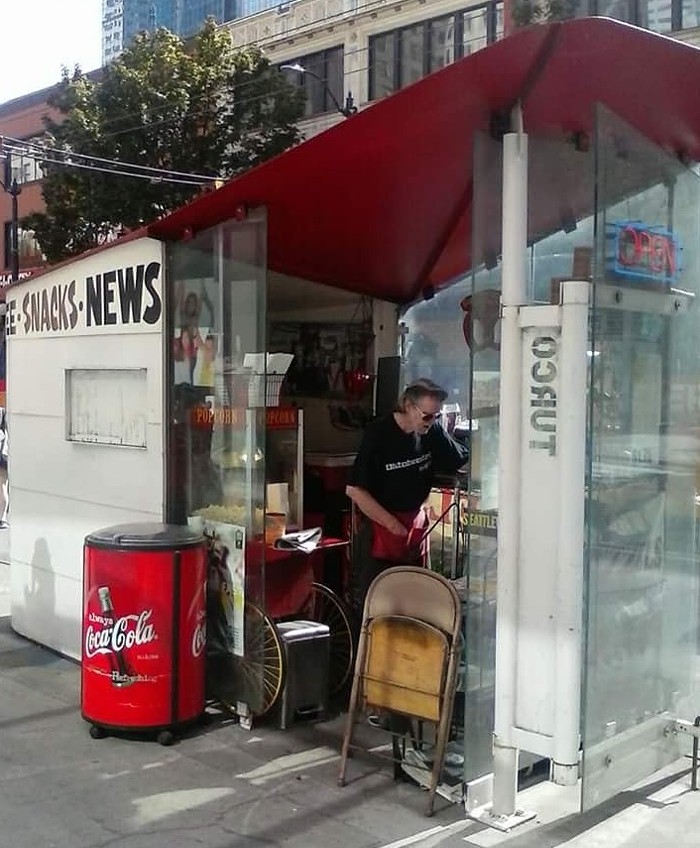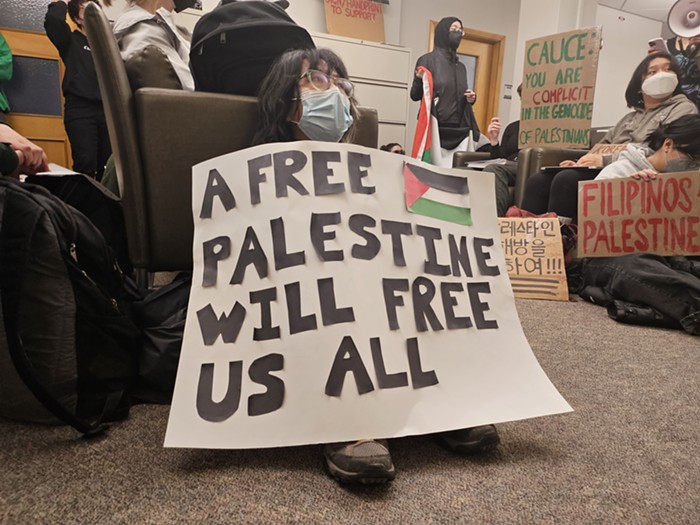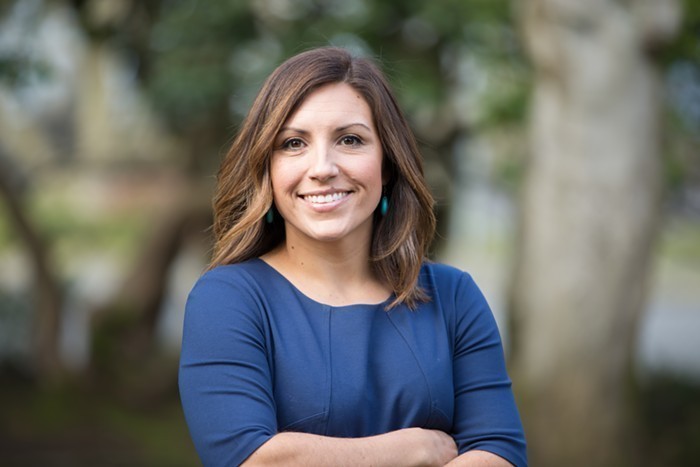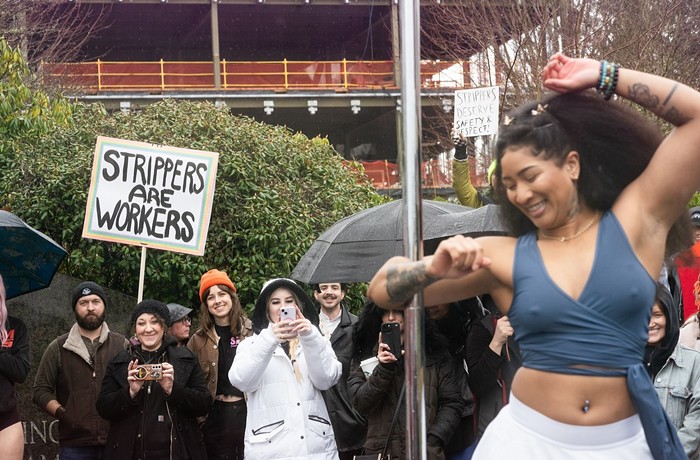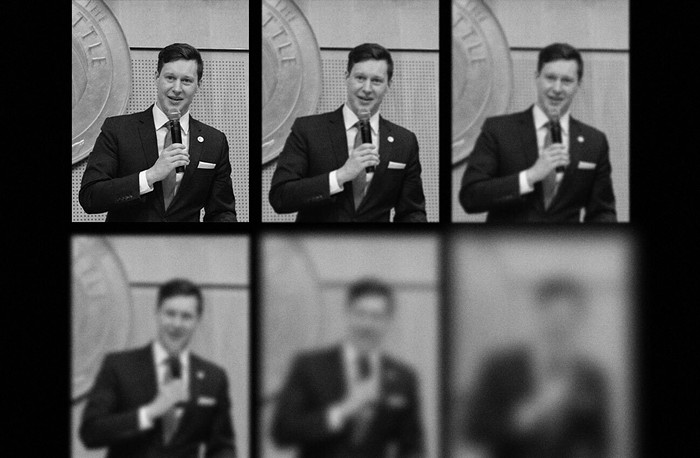Contrary to popular belief, there are young people who give a shit. On this Sunday afternoon, there are exactly 11 of them, aged 15 to 25, and they're in the Capitol Hill Public Library—not to study for finals but to train for higher stakes: combat with military recruiters.
Thanks to the No Child Left Behind legislation, military recruiters are entitled to their place in schools, and those who kick them out risk losing federal funds—$40 million in the case of Seattle Public Schools.
In an era with no draft, it's up to recruiters to fill the American military. Their sales pitches are persuasive, if rehearsed. These students, who belong to Youth Against War and Racism, which grabbed headlines for the student walkout that swarmed downtown November 2, are rehearsing a counter-script of their own.
"They come into schools in their uniforms—these guys are really intimidating," says Luke. Mangy straw-colored hair busting out from a baseball cap, Luke's activism started after he confronted recruiters trolling for enlistments at the Renton High School prom. "They're bigger guys—21 to 24—and they're in an environment where they feel they can be the big men on campus. So as activists, we have to figure out how best to cut them down."
To that end, the group stages improvisational theater. Two members play military recruiters, while two behave as activists and others pretend to be naive students.
A goateed twentysomething assumes the student role, and after hearing from a recruiter how the military can pay his way through college he asks, "Do I have to go to Iraq?"
"We can give you an administrative job away from the action," says Jessica Johnson, 19, playing the recruiter with a solicitous smile. Another teen jumps in her face. "Is that guaranteed? Will you write that down?"
The naif says he needs money for college and another "counter-recruiter" spits back the statistic that only a third of military enlistments ever see that money, and how even then it takes eight years.
YAWR now has a presence in roughly 10 local high schools—including Renton, Nathan Hale, and Ingraham—and the students here will take back these activist methods to instruct their own members.
Seattle Public School District was not available for a comment about YAWR.
tfrancis@thestranger.comIN OTHER NEIGHBORHOODSBALLARD: To those with a sense of nostalgia for the Ballard of yore, the empty plot of land at the end of 24th Street is a "little hidden treasure." That's how Chamber of Commerce executive director Beth Miller puts it—though she admits it requires some imagination. It used to be a de facto park, where families had picnics, and before that a de facto fish market with boats parking along a dock that extends 270 feet into Salmon Bay. More recently, the land has been a "treasure" only to the vagrants who put up tents, crack a bottle of hooch, and sleep without threat of disturbance from cops or park rangers. Attorney Peter Goddu, who lives on a boat near the land, has led the effort to clean up the overgrown plant life and roust the vagrants. But he says the more important next step would be for the current owner, Seattle Department of Public Transportation, to hand the property over to the Seattle Parks Department, which has more management resources and can ensure it remains fit for public use. A decision is expected in the next few months. CAPITOL HILL: The Seattle Central Community College pool, the last public swimming facility in Capitol Hill, will soon close for repairs—and when it does, it may not open again. College spokeswoman Lorna Sutton says the small pool and spa, located in the Student Activity Center, have encountered mechanical problems and the college is considering the cost of repairs and ongoing maintenance of the facility against the community costs of losing the pool. "Pools are very expensive to operate and energy costs being what they are, that must be a factor," says Sutton. As it stands, the pool is set to close January 3, but it might happen even sooner if there is another mechanical failure in the meantime. -TF
